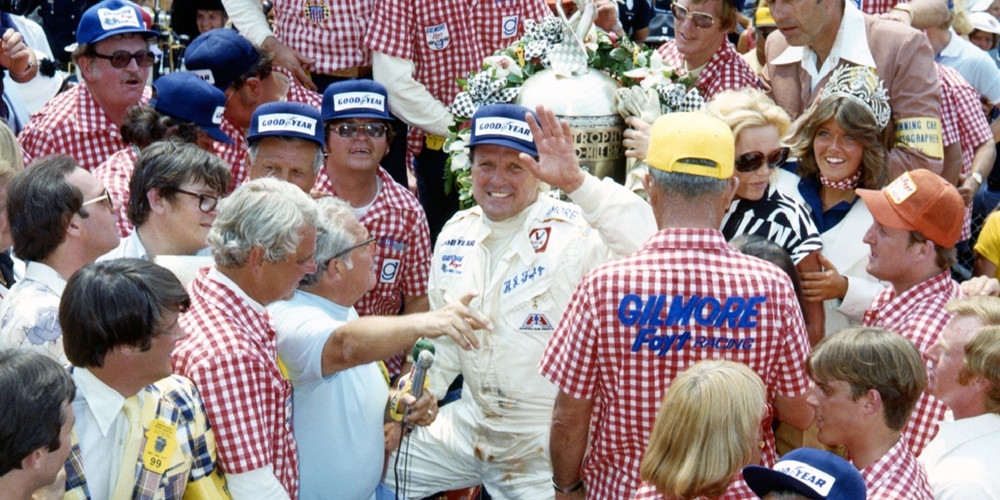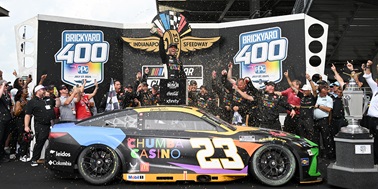In the 111-year history of the Indianapolis 500, it’s hard to find a more important and more glorious event for three major reasons than the 61st Indianapolis 500 on May 29, 1977. The “Month of May” in 1977 is when three of the biggest storylines in the history of the sport all came together in a trilogy of events that continue to be revered 40 years later.
The first came on Pole Day – Saturday, May 14, 1977 – when Tom Sneva broke the long-awaited, much-anticipated 200-mph mark in qualifications.
The 2.5-mile Indianapolis Motor Speedway surface had been repaved following the 1976 “500.” Just 51 minutes into qualifications in 1977, Sneva broke the 200-mph barrier on his first lap at 200.401 mph for a track record. It lasted less than 45 seconds as his next lap was even faster at 200.535 mph (44.88 seconds). Sneva’s last two laps were 3 mph slower, but the more than 200,000 fans that came to the Indianapolis Motor Speedway that day witnessed history.
Phil Hedback of Bryant Heating and Cooling Company poured 200 silver dollars into Sneva’s helmet – a symbolic gesture that was previously done in 1962 when Parnelli Jones was the first to break the 150-mph barrier.
But it wouldn’t be the final time Hedback made an appearance to honor an historic accomplishment.
On Bump Day, Sunday May 22, Janet Guthrie became the first female driver to qualify for the Indianapolis 500 starting lineup. She was the first driver to make a qualification attempt on that day, and her four-lap average of 188.403 mph put her safely in the field.
Hedback broke out the silver dollars and dumped 188 of the prized coins into Guthrie’s helmet for her history-making feat.
But the best was yet to come on Race Day.
Ever since A.J. Foyt earned his third Indianapolis 500 victory in 1967, fans flocked to the Indianapolis Motor Speedway and tuned in on radio and television to see if “Super Tex” could become the first four-time winner of “The Greatest Spectacle in Racing.” Foyt was just 32 years old at the time of his third win and was at the peak of his powers behind the wheel.
Although he would come close over the next 10 years, it wasn’t until a hot, humid day with temperatures soaring past 90 degrees in 1977 that Foyt finally became a four-time winner of the Indianapolis 500.
Foyt started fourth, but Gordon Johncock dominated the 1977 race, leading 129 laps before his crankshaft failed just 16 laps from the checkered flag. Earlier in the race, Foyt’s Coyote powered by a Foyt engine had run out of fuel, but he battled his way back to contention.
With 20 laps to go, Foyt was 10 seconds behind Johncock. But after both drivers made their final pit stops, the lead was trimmed to seven seconds.
On Lap 184, however, the crankshaft broke on Johncock’s car. Johncock pulled the car into the inside of Turn 1 as Foyt sped by to take the lead. Johncock, one of many drivers who had to deal with the extreme heat and humidity, jumped into the creek just inside Turn 1 to cool off.
Foyt had a 30-second lead over Sneva and played it safe to drive to the historic win.
The 1977 race also included two historical footnotes.
It was the last time the winning car had a body and engine built entirely within the United States.
And it was the last Indianapolis 500-Mile Race of Tony Hulman’s life. The man who saved the Indianapolis Motor Speedway from extinction when he purchased it from Eddie Rickenbacker in November 1945 and resurrected the Indianapolis 500 in 1946 died on Oct. 27, 1977 in his beloved Terre Haute, Indiana.
Foyt invited Hulman to ride with him up on the backseat of the Oldsmobile Delta 88 convertible pace car on the Victory Lap around the Indianapolis Motor Speedway. It was the only time Hulman ever rode up on the backseat with a winner and served as a fitting conclusion to the most historic Month of May in Indianapolis 500 history.
"One of the highlights of my career is I know Tony Hulman wanted me to the be the first four-time winner,” Foyt said. “After I was lucky enough to be the first four-time winner, I was thrilled that Tony Hulman rode with me on the victory lap. I'm just so glad that I was the first four-time winner and Mr. Hulman rode around with me.
"That has to be my highlight of my career.”




